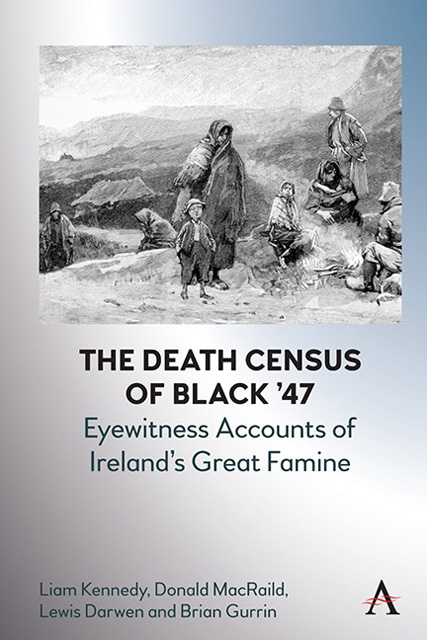Introduction
Published online by Cambridge University Press: 17 October 2023
Summary
A million dead. A million fled. That is how one distinguished writer summarised the devastating consequences of the Great Famine in Ireland. In season after season in the later 1840s, a mysterious plant disease destroyed the potato crop which was the main source of food of the labouring classes. Hunger stalked the land, followed in quick succession by killer diseases. notably typhus, which preyed upon those weakened by famine. Malnutrition, disease, suffering, and, finally, death, sealed the fate of a million or so souls. As in famines elsewhere, those most affected were the poorest. In Ireland, these were the cottiers and the rural labourers, as well as a sprinkling of town labourers, who even in the best of times struggled to make a living. But these were the worst of times. When a population census was taken in 1851 at the end of the famine, a quarter of the population had vanished through death or emigration. This collapse was brutally compressed within the space of a few years.
In the context of Irish history, it was the greatest disaster since the other great famine of 1740–41. Taking a wider view, relative to population size, the catastrophe ranks among the most severe famines of the modern world. It retains an important place in the psyche of the Irish people and the Irish diaspora to this day. In recent decades, its history has become the focus of considerable scholarly and popular attention. In particular, a tremendous amount of work has been completed on mortality, emigration, relief efforts and the wider political, social and psychological consequences of the calamity, though highly politicised accounts such as genocidal interpretations of the Famine no longer enjoy wide currency. Our understanding of the Great Famine is now much more comprehensive and nuanced, as well as being firmly located in a comparative context.
Yet much remains to be retrieved and understood, particularly at the level of the rural poor. The ‘holy grail’ in terms of grasping the experience of the crisis surely must be a set of famine diaries produced by those most badly affected, small farmers, cottiers and labourers. Such personal accounts have never materialised, though at least one fake diary captured the public imagination in the 1990s.
- Type
- Chapter
- Information
- The Death Census of Black '47Eyewitness Accounts of Ireland's Great Famine, pp. ix - xiiPublisher: Anthem PressPrint publication year: 2023



